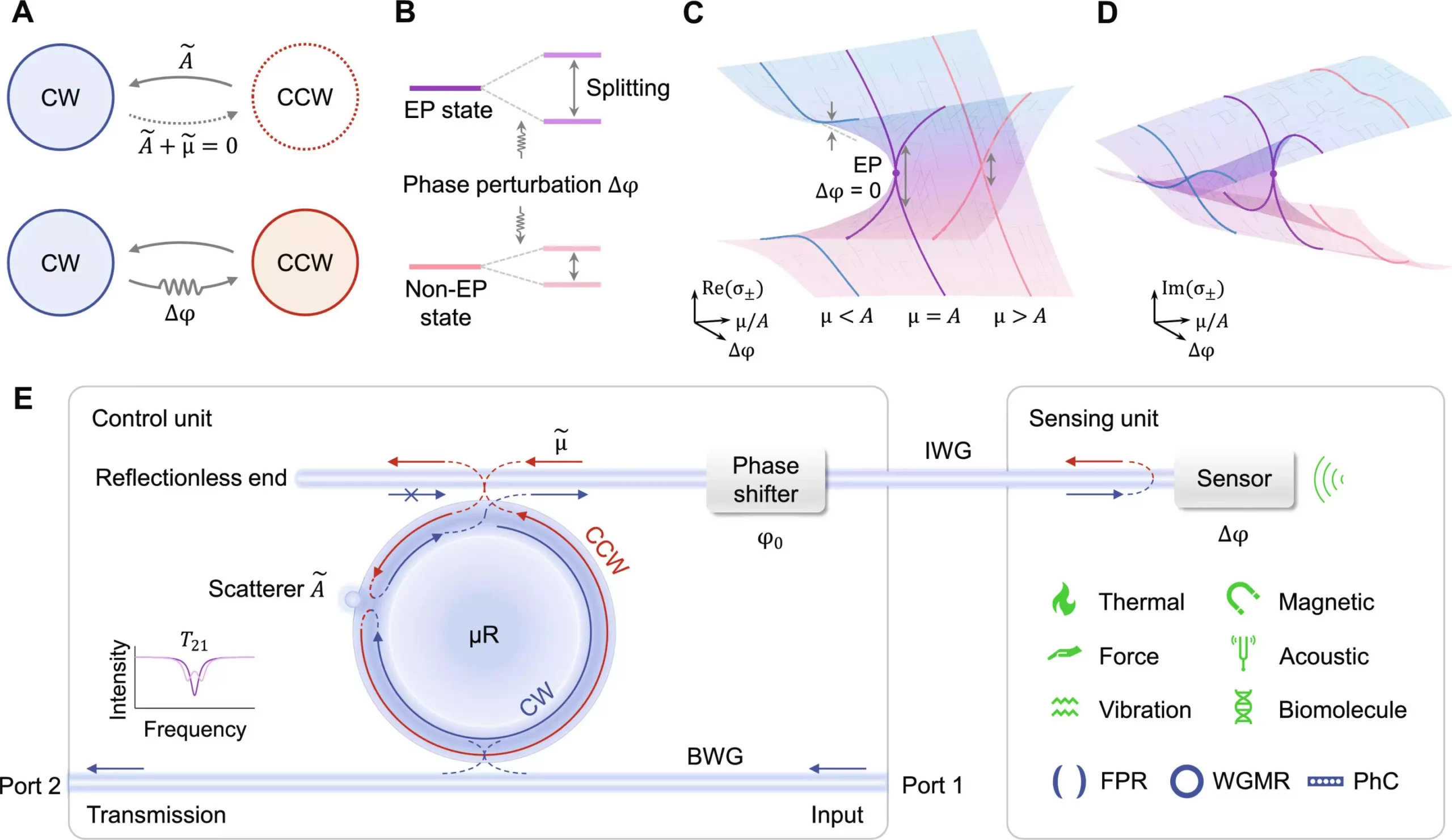The field of optical sensing has long been crucial in various scientific and technological advancements. It plays a vital role in detecting environmental changes, monitoring physical properties, and even aiding in medical diagnostics. As technology advances, the demand for sensors with higher sensitivity to detect faint signals amidst noise has become increasingly pressing. One recent breakthrough in this area comes from the research conducted by Lan Yang and Wenbo Mao at Washington University in St. Louis, which explores the use of exceptional points (EPs) in advancing optical sensing capabilities.
Exceptional points are specific conditions in systems where extraordinary optical phenomena can occur. Yang and Mao’s study sheds light on how these EPs can be leveraged to enhance the sensitivity of optical sensors significantly. By deploying EPs on conventional sensors, they have managed to achieve impressive results in detecting environmental perturbations with striking accuracy. What sets their approach apart from traditional methods is the fact that it does not require any modifications to the sensor itself. Instead, they have developed an EP control unit that can be connected to external sensors, allowing for easy tuning and adjustment of EPs without complex sensor modifications.
Revolutionizing Optical Sensing
The innovative sensing platform developed by Yang and Mao represents a revolutionary extension of EP-enhanced sensing. It offers a universal solution that can significantly enhance the sensitivity and detection limit of phase-sensitive sensors across various applications. By decoupling the sensing and control functions, they have managed to overcome the physical limitations that have hindered the widespread adoption of EP-enhanced sensing technologies. This opens up exciting possibilities for applying EP enhancement to a wide range of conventional sensors, including ring resonators, thermal sensors, magnetic sensors, and sensors used in biomedical applications.
One particularly promising area where EP-enhanced sensing could have a significant impact is in medical technologies. By enhancing the sensitivity of sensors, researchers can improve the detection of weak signals in medical imaging techniques such as MRI. This could potentially lead to advancements in MRI technology, making it more efficient and accurate. Additionally, EP-enhanced sensing could find valuable applications in health monitoring and biomedical imaging, offering new possibilities for detecting biomarkers and other biological indicators with higher precision.
The research conducted by Lan Yang and Wenbo Mao on the application of exceptional points in optical sensing represents a significant advancement in the field. Their innovative approach to enhancing sensor sensitivity has the potential to revolutionize various scientific and technological applications, from environmental monitoring to medical diagnostics. By developing a universal EP control unit that can be easily integrated with existing sensors, they have made EP-enhanced sensing more accessible and versatile. This paves the way for exciting new possibilities in optical sensing and opens up a world of opportunities for improving detection capabilities across different disciplines.


Leave a Reply